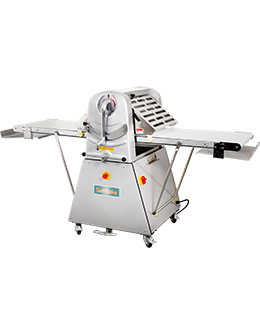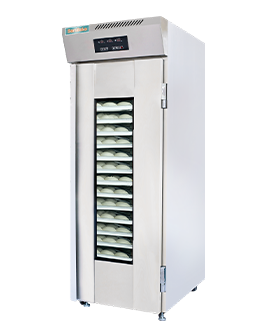Rotating Rack Oven
Introduction to Rotating Rack Ovens

How Does a Rotating Rack Oven Work?
Basic Mechanics
At its core, a rotating rack oven is a large, enclosed baking chamber equipped with racks that rotate slowly inside. The racks are loaded with trays of dough, pastries, or other baked goods. The oven heats the interior uniformly, and the rotation ensures even heat distribution across all items.
The Role of Rotation in Baking
Think of rotation like a gentle dance—by turning the racks, hot air circulates evenly around each tray, eliminating hot spots or uneven browning. This process guarantees that every piece comes out uniformly baked, whether it’s a crusty loaf or a delicate pastry.
Types of Rotating Rack Ovens
Gas vs. Electric
- Gas Ovens: Known for quick heat-up times and excellent heat retention, gas ovens are popular in large bakeries where speed is crucial.
- Electric Ovens: Offer precise temperature control and are easier to install, making them suitable for smaller operations or those seeking energy efficiency.
Manual vs. Automated
- Manual Ovens: Require operators to load, unload, and control the oven manually.
- Automated Ovens: Feature programmable controls, timers, and even remote monitoring, reducing labor and increasing consistency.
Key Features of Rotating Rack Ovens
Capacity and Size
Depending on your business scale, you can find models ranging from small units holding a few racks to massive setups accommodating dozens. Size matters—ensure your chosen oven fits your space and production needs.
Heating Methods
Most ovens use either gas or electric heating elements, with some incorporating hybrid systems. The choice impacts energy costs, heating speed, and control.
Control Systems
Modern rotating rack ovens feature digital controls, allowing precise adjustments for temperature, humidity, and baking time. Some even connect to smart devices for remote operation.
Advantages of Using a Rotating Rack Oven
Even Baking
The rotation ensures heat reaches every corner, preventing underbaked or burnt spots. It’s like having a professional baker turning the trays constantly—without the effort!
Efficiency and Speed
Large capacity means you can bake more items simultaneously, reducing batch times and increasing throughput.
Consistent Results
Automation and uniform heat distribution lead to products that look and taste the same every time—crucial for branding and customer satisfaction.
Disadvantages and Challenges
Cost and Maintenance
Rotating rack ovens are significant investments, often costing thousands to hundreds of thousands of dollars. Maintenance can also be complex, requiring skilled technicians.
Space Requirements
These ovens are large and require dedicated space in your bakery or production facility, which might be a challenge for smaller setups.
Applications of Rotating Rack Ovens
Commercial Bakeries
Ideal for bread, pastries, and cakes, especially when large quantities are needed daily.
Pizzerias
Perfect for baking multiple pizzas simultaneously with consistent quality.
Large-Scale Food Production
Used in industrial settings for preparing baked goods at scale, ensuring uniformity across batches.
Choosing the Right Rotating Rack Oven
Factors to Consider
- Production volume
- Space availability
- Budget constraints
- Type of baked goods
Budget and Needs
Balance your immediate budget with long-term benefits. Sometimes investing in a more advanced model pays off through increased efficiency and product quality.
Maintenance and Troubleshooting
Regular Care Tips
- Clean the interior regularly to prevent buildup
- Check heating elements and fans
- Calibrate controls periodically
Common Issues and Fixes
- Uneven baking: inspect rotation mechanisms
- Temperature inconsistencies: verify sensor calibration
- Mechanical noises: lubricate moving parts
Innovations in Rotating Rack Ovens
Modern Features
- Improved insulation for energy efficiency
- Faster heat-up and cool-down cycles
- Integrated humidity controls
Smart Technology Integration
Some models now connect to Wi-Fi, enabling remote monitoring and adjustments, reducing downtime and optimizing baking cycles.
Cost Analysis
Investment vs. Benefits
While the upfront cost can be steep, the efficiency, consistency, and capacity benefits often justify the expense. Think of it as planting a seed for long-term growth.
Long-Term Savings
Reduced labor, minimized waste, and consistent quality translate into higher profits over time.
Environmental Impact
Energy Efficiency
Newer models focus on reducing energy consumption, lowering your carbon footprint, and cutting costs.
Eco-Friendly Features
Some ovens incorporate recyclable materials and environmentally friendly insulation.
Future Trends in Rotating Rack Ovens
Automation and AI
Expect smarter ovens that optimize baking cycles using artificial intelligence, reducing waste and improving product quality.
Customization Options
Tailor baking parameters for specific recipes, enhancing versatility and innovation.
How to Get Started with a Rotating Rack Oven
Purchasing Tips
- Assess your production needs
- Compare features and warranties
- Seek demonstrations or trial periods
Installation and Training
Proper setup and staff training are crucial to maximize your investment. Work with reputable suppliers and technicians.
Conclusion
Rotating rack ovens are a game-changer for large-scale commercial baking. Their ability to bake evenly, efficiently, and consistently makes them indispensable in high-volume operations. While they require a significant investment and space, the long-term benefits—improved product quality, increased capacity, and operational efficiency—are well worth it. Whether you’re running a bakery, pizzeria, or food manufacturing plant, understanding these ovens can help you make smarter choices and elevate your baking game.
FAQs
1. How long does a typical rotating rack oven last?
With proper maintenance, a high-quality rotating rack oven can last 10-15 years or more.
2. Can I use a rotating rack oven for baking all types of baked goods?
Most are versatile, but some models are optimized for specific items like bread or pastries. Check specifications before purchasing.
3. What is the typical energy consumption of a rotating rack oven?
It varies based on size and type, but energy-efficient models can significantly reduce electricity or gas use compared to older units.
4. Is training necessary for operating a rotating rack oven?
Yes, proper training ensures safety, optimal operation, and maintenance, extending the oven’s lifespan.
5. How often should I perform maintenance on my rotating rack oven?
Regular checks should be done weekly, with comprehensive servicing annually, depending on usage.
Final Thoughts:
Investing in a rotating rack oven can transform your baking operation, making it faster, more consistent, and more profitable. Do your research, consider your specific needs, and embrace the future of commercial baking!
- *Name
- *Title
- *Content
- Name:
- Vickey
- Tel:
+86-18862554041
- Email:
- sales@sambake.com
- Address:
- Xinxiang Industrial Park,Wuxi City,Jiangsu China






